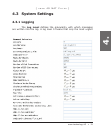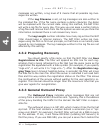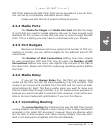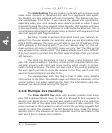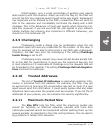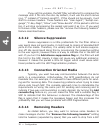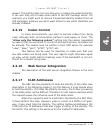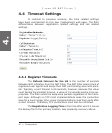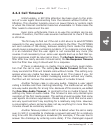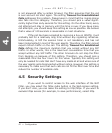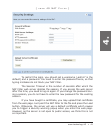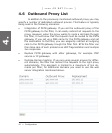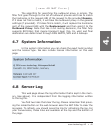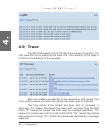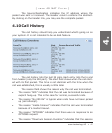
snom technology AG • 41
[ S N O M 4 S N A T F I L T E R ]
4.4.2 Call Timeouts
Unfortunately, in SIP little attention has been given to the prob-
lem of a user agent disconnecting from the network without further no-
tification. This situation typically occurs on power failure or system crash
or when the Internet connection becomes unavailable. In these cases the
filter needs to disconnect the call.
Even more unfortunate, there is no way this problem can be ad
-
dressed. Therefore, the filter uses several mechanisms to check if the call
is still alive.
The first way to find out if the call is still alive is to send OPTIONS
requests to the user agents directly connected to the filter. The OPTIONS
are sent outside of the dialog, because sending them inside the dialog
would cause a sequence numbering problem. If no response comes back,
it is an indication that the user agent is not connected any more (the
reverse it not necessarily true: some user agents boot up so fast that op
-
tions responses might be returned in time). The Refresh Interval tell the
filter after how many seconds it should send; the No Response Timeout
tells the filter how long it should wait for a response.
If there is absolutely no media, this is also a fairly good indica
-
tion that the call is over. The setting No Media Timeout defines how
many seconds the filter will tolerate calls without media. This setting only
applies when any media has been received at all. This means if you, for
example, had started an instant messaging session without any media,
the filter will not remove this session because of a media timeout.
Another famous case is one way audio. Imagine a user agent
calling a mailbox and then crashing/rebooting. The media server will play
one-way audio possibly for a long time. Because of this scenario, we added
the One-Way Audio Timeout. In contrast to the no media timeout, this
setting only looks at audio media. This timeout is also only started upon
reception of the first media packet. This setting should consider that some
user agents do silence suppression. Please keep in mind that some users
are very quiet and don’t say anything for a relatively long time. However,
a conversation where someone does not say anything for more than five
minutes should be extremely seldom.
Another famous problem in SIP is to detect when the call is really
over. In SIP, it is possible to challenge a request and wait for a relatively
long time until the challenge is answered (for example, if the user has to
answer the challenge by entering some data). If the challenged request
4.



